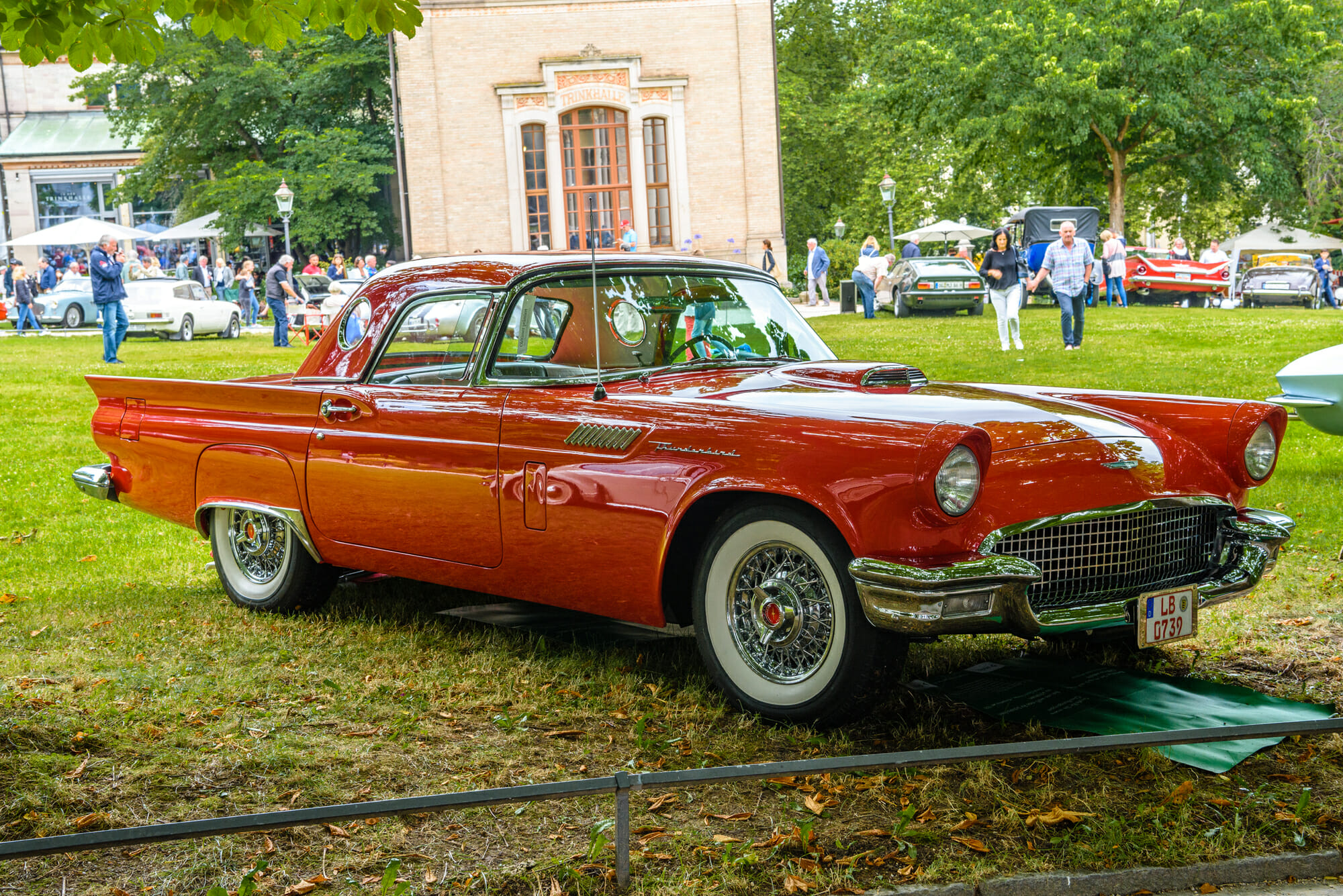
Does it seem like every classic Ford or Mercury car listed for sale has an FE engine on its spec sheet? Does that mean that they all have the same engine under the hood?
What are the specs for a Ford FE engine?
The FE badge refers to a range of V8 engines produced between 1958 and 1976. They ranged in size from the earliest 331.8 cubic inches up to 425.98 cubic inches. Horsepower on the earliest models hit the 240 hp benchmark. The high-rise 427 in 1967 could be tweaked to crank out over 550 horsepower in competition settings.
You might not be buying a muscle car destined to blister the pavement, but that FE engine does give you a pleasing rumble under the hood. How did Ford manage to keep building this iconic V8 engine for over 18 years?
The History of the Ford FE Engine
In the early 1950s, Ford debuted their Y-block V8 engines which improved rigidity and support for the entire engine block, but they needed to go even bigger. Thus in 1958, the FE and FT engines were introduced as a V8 that had plenty of options for add-ons and increased growth.
The US automotive industry was just on the edge of the muscle car decade and everybody wanted more horsepower in their commuter car.
The first FE offered a displacement of 332 cu. in. and could be built with two or four barrels. An FT engine appeared at the same time for the medium and heavy-duty pickup and school bus market. The only difference between the FE and the FT was the use of more iron in the construction of parts, different water pumps, and distributor shafts.
With each model year, the FE added more cubic inches until its final size was reached in 1966 with the 428, which became the iconic engine that the FE range is best known for. The big motor was perfect for use on the racing circuit and was even the basis for the engine in the GT40 that won the 24 Hours of Le Mans in 1966 — when Ford finally beat Ferrari.
Its most notable moment came in 1965 when NASCAR actually banned the high-rise 427 from competition. The hood needed to make room for the monster motor was simply impractical on a street machine and the governing body called foul.
Even if the 427 high-rise FE could not make it on the oval stock car circuit, it was hugely popular on the drag racing circuit.
The FE managed to survive until 1976 when new governmental regulations on fuel economy and emissions required Ford to return to the drawing board.
What Makes and Models Used the Ford FE Engine?
The Ford FE engines were stock in a variety of street machines including:
- 1958 and 1959 Ford
- ’61 Mercury Monterey
- A variety of Edsel autos made in the late ’50s
- Ford Torino
- Ford Thunderbird
- Ford Galaxie
- Shelby Cobra
If your classic Ford was built between ’58 and ’76, it likely has an FE V8 under the hood.
What Does FE Mean on the Ford FE Engine?
FE stands for Ford Edsel. Edsel was the only son of Ford Motor Company founder, Henry Ford.
Why was the Ford FE 427 Cammer Engine Banned?
In 1964, the Ford racing segment of Ford Motor Company needed a way to beat Plymouth on the track. They created a single overhead cam (SOHC) version of the 427 engine with a high-rise design.
This beast poured out over 550 horsepower and earned Ford a trophy at the Daytona 500 with Tiny Lund. However, part of the NASCAR rule book says that in order to run a car on Sunday, at least 500 of the vehicles had to be sold on the public market.
There was no feasible way for a Ford with the SOHC Cammer engine under the hood could be driven safely on the street. Thus NASCAR banned the FE 427 as a “special racing engine.”
What Makes the Ford FE 427 Engine a Side Oiler?
Oil is introduced into the engine block along a channel located at the side of the engine. The top-oiler FE engine fed oil in at the top. The side-oiler design is intended to lubricate the crank at the same time as the valve-train, lowering friction. Both designs are durable.
Is the Ford FE Engine a Good Racing Motor?
The racing world simply loved the Ford 427 engine, from road courses to ovals to drag strips. In fact, you can still buy a new 427 crate engine for your modern performance machine today. The configuration, construction, and size have endured for over 50 years, a testament to its ability.
Know More Before You Buy Your Next Classic Car
Whether you are shopping for a classic car for show or to drive to church on Sundays, you want to know more than if it has a nice paint job.
Vehicle History can connect you with user and expert reviews, reliability scores, and safety information with just a few clicks. We are your ammunition for a successful negotiation at the dealership.
